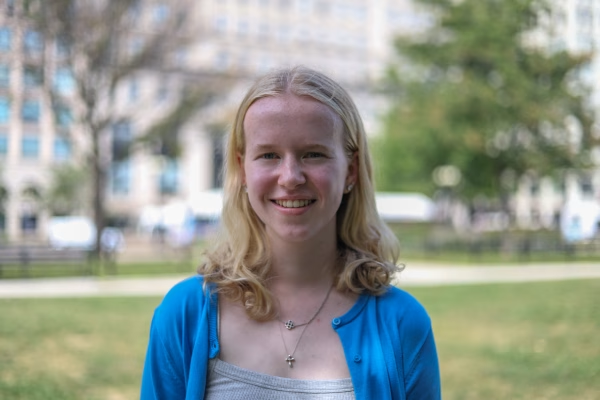On days when the Chicago Cubs win at home in Wrigley Field, “Go, Cubs, Go!” echoes throughout Wrigleyville. Fans wear their “W” flags with pride as they leave the ballpark, knowing they have just experienced a piece of Chicago’s history. Nearby restaurants and bars wait patiently for fans to trickle in, knowing they will be booming in mere seconds.
Amid the hustle and bustle of 81 home games from April through September, there are apartments and houses where many people live, including some DePaul students.
Emma Wilkie, who graduated from DePaul last June, describes living in Wrigleyville as “a lot happening.”
“Especially in the summer, it’s good and bad,” Wilkie said. She does like living there, though. “It’s a really unique experience to me to live in a place that feels so anchored in history but also has a really current energy.”
Wrigley Field has been around for over a century. It opened in 1914 and was originally named Weeghman Park. The Wrigley family purchased the team in 1920, and the neighborhood has since been named Wrigleyville. Weeghman Park was then renamed Wrigley Field in 1926 in honor of chewing gum tycoon William Wrigley Jr.
Many people call Wrigley Field the Friendly Confines because of its “welcoming ambiance and intimate setting.”
Stephanie Ketsios, a sophomore at DePaul, can attest to that. She would describe living in Wrigleyville as “super welcoming.”
“Overall, (it’s) a very fun place to live, entering my 20s,” Ketsios said. “I honestly really do enjoy living here. It’s always super fun and has good energy.”
Wilkie agrees. She said she recognizes “the same people walking by every day” and how it feels like a neighborhood, despite the touristy ambiance.
However, Luisa Freimuth, a DePaul junior who has lived in Wrigleyville since last June, feels the opposite.
“I would say the community aspect of Wrigley is very scarce,” Freimuth said, noting the lack of small businesses. “Wrigley Field will have events on the lawn that are cute, but I would be curious to know how many of the people that go actually live in the area.”
Wrigleyville became more commercial after banker Tom Ricketts took over as chairman of the Chicago Cubs in 2009. The Cubs spent nearly $1 billion in 2014 to expand the ballpark and its amenities, both inside and out.
One of the biggest parts of that project was the making of Gallagher Way, which was originally called The Park at Wrigley. Ricketts said he wanted to make the neighborhood into an “attractive year-round destination for tourists, residents and Cubs fans.” It has mixed-retail development, new restaurants and even a hotel, Hotel Zachary, that looks straight onto the ballpark.
Wilkie, who has lived in Wrigleyville for three years, said she moved to Wrigleyville because of its proximity to DePaul. Ketsios, who moved to Wrigleyville last July, did the same.
“My friends and I really loved the Belmont/Wrigley area,” Ketsios said. “Plus it was still pretty close to campus, which was important to all of us.”
The Addison Red Line stop, where Wrigley Field is located, is two stops away from the Fullerton stop, where DePaul’s Lincoln Park campus is. And it’s not too much farther to the Jackson stop and the Loop campus.
Freimuth believes that the nightlife — more specifically the bars — are more like “Millennial McGees,” meaning these bars appeal to postgrad-aged residents more than DePaul students.
“I think from an outside perspective it gets hyped up as a place with crazy and exciting nightlife,” Freimuth said. “But most bars don’t stay open that late, since they are normally overrun with Cubs fans from the suburbs.”
Beyond the crowds and game-day energy, Wilkie said there’s a sense of community and character that can be easy to overlook — though she also may be ready to move on.
“It’s not an experience I really could’ve had living anywhere else,” she said. “Personally, I’m ready to explore living in a new (neighborhood), but I’ve loved my time here.”
Related stories:



